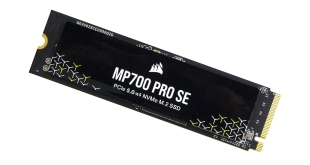The 130 gram mass is spread out across a large area, making it feel light in hand but not to the point it feels cheap. The HTC One X has a premium feel to it – a matte polycarbonate finish and a slight curvature add to this equation the best.
The 8.9mm thickness takes 2nd place for the thinnest HTC phone available, although it doesn’t feel amazing in hand.
The front of the HTC One X is dominated by the very fine 4.7 inch display. To be more precise it is a Super LCD 2 unit that is straight up brilliant. It has a traditional RGB matrix rather than the poorer quality Pentile matrix as seen on the Samsung Galaxy S III.
The display has a 1280×720 resolution and the bulk of the front of the phone is protected from scratches by Corning’s Gorilla Glass 2. It is the first phone to be available with this, which is 20% thinner while being just as strong as the original Gorilla Glass. I took a few stabs at it with some keys and there was nothing to show for it.
Colours are amazing, vibrant, and are saturated to near-perfection. Viewing angles are also very impressive and colour shifting does not occur at all, even at ridiculous angles.
To me it isn’t a display; it’s a moving picture and is easily the best display I have seen on any smartphone, let alone tablet, monitor or TV. One of the default wallpapers looks more art than pixel.
The PPI count on the One X is 312 PPI and while this lags slightly behind the iPhone 4S (330 PPI), pixelation is still not worth mentioning.
The One X also supports 10 finger multi-touch, though you do have to disable HTC’s gestures to enable the detection of four fingers or more. If you do wind up using something like that Media Link HD accessory, then you’ll have to choose between the two.
We found touch responsiveness to be hit or miss, where we were intending to do a quick flick, the phone thinks of it as a actual touch. It may not be linked but I noticed this happened the most in the morning after it had been on the charger all night. Whether the two events are linked or not we’re not sure, but the problem definitely resolved itself as the day wore on.
The capacitive touch buttons below the display are in the order of back, home and multitasking. This means the multitasking key is closest to you if you are right handed, and it is probably the least used key. Contrary, in the landscape orientation the back key is closest to you.
The same buttons also light up in a svelte blue colour, taking me back to the days where the colour of a phone’s keypad was a great source of discussion.
Above the display is the HTC logo and the call speaker hidden behind a bunch of pinholes. Also behind the plastic mesh is a green/red notification LED, that is also visible through the gap between the display and body. The notification LED stops flashing after five minutes in order to conserve battery life.
Just to the right of the mesh is the 1.3 MP front facing camera. The front camera lens is recessed into the body slightly (unlike the rear camera) which could prove to be a decent dust pool over time.
 KitGuru KitGuru.net – Tech News | Hardware News | Hardware Reviews | IOS | Mobile | Gaming | Graphics Cards
KitGuru KitGuru.net – Tech News | Hardware News | Hardware Reviews | IOS | Mobile | Gaming | Graphics Cards














